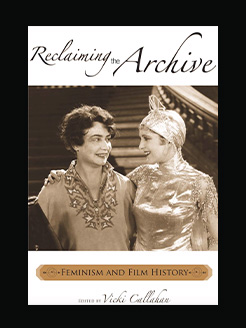Published in 2025 (first published 1817)
4 hours and 20 minutes
Mary Wollstonecraft Shelley (1797-1851) was an English novelist. Born the daughter of William Godwin, a novelist and anarchist philosopher, and Mary Wollstonecraft, a political philosopher and pioneering feminist, Shelley was raised and educated by Godwin following the death of Wollstonecraft shortly after her birth. In 1814, she began her relationship with Romantic poet Percy Bysshe Shelley, whom she would later marry following the death of his first wife, Harriet. In 1816, the Shelleys, joined by Mary’s stepsister Claire Clairmont, physician and writer John William Polidori, and poet Lord Byron, vacationed at the Villa Diodati near Geneva, Switzerland. They spent the unusually rainy summer writing and sharing stories and poems, and the event is now seen as a landmark moment in Romanticism. During their stay, Shelley composed her novel Frankenstein (1818), a masterpiece of Gothic horror and a defining work of the nineteenth century. Following Percy Bysshe Shelley’s drowning death in 1822, Mary returned to England to raise her son and establish herself as a professional writer. Recognized as one of the core figures of English Romanticism, Shelley is remembered as a woman whose tragic life and determined individualism enabled her to produce essential works of literature which continue to inform, shape, and inspire the horror and science fiction genres to this day.
Percy Bysshe Shelley (1792-1822) was an English Romantic poet. During his time at Oxford, he began his literary career in earnest, publishing Original Poetry by Victor and Cazire (1810) and St. Irvine; or, The Rosicrucian: A Romance (1811) In 1811, he married Harriet Westbrook, with whom he lived an itinerant lifestyle while pursuing affairs with other women. Through the poet Robert Southey, he fell under the influence of political philosopher William Godwin, whose daughter Mary soon fell in love with the precocious young poet. In the summer of 1814, Shelley eloped to France with Mary and her stepsister Claire Claremont, travelling to Holland, Germany, and Switzerland before returning to England in the fall. In 1816, Percy and Mary accepted an invitation to join Claremont and Lord Byron in Europe, spending a summer in Switzerland at a house on Lake Geneva. In 1818, following several years of unhappy life in England, the Shelleys―now married―moved to Italy, where Percy worked on The Masque of Anarchy (1819), Prometheus Unbound (1820), and Adonais (1821), now considered some of his most important works. In July of 1822, Shelley set sail on the Don Juan and was lost in a storm only hours later. His death at the age of 29 was met with despair and contempt throughout England and Europe, and he is now considered a leading poet and radical thinker of the Romantic era.
What is this book about?
“I never knew—I never imagined what mountains were before.”
History of a Six Weeks’ Tour (1817) is a volume of travel-writing by Mary Wollstonecraft Shelley and Percy Bysshe Shelley, two of the best-known authors of the English Romantic period. Comprising prose narrative, correspondence, and poetry, it is a highly engaging account of their ‘adventures and feelings’ during two journeys from England to Switzerland.
The first part of History describes the titular ‘tour’ made by the not-yet-married Mary and Percy in July-September 1814, when mainland Europe was once again accessible to British travellers at the end of the Napoleonic wars. The long descriptive letters which make up the second part of History recall the so-called ‘Frankenstein summer’ of 1816, some of which the Shelleys spent with Byron on the shores of Lake Geneva. This part of History also provides significant biographical and historical context for Mary’s novels Frankenstein (1818) and The Last Man (1826), key sections of which are set in the Alps, and for two of Percy’s most canonical poems, ‘Hymn to Intellectual Beauty’ and ‘Mont Blanc’, the second of which was published for the first time in History. This edition includes an introduction, detailed notes, and appendices, placing the book in its historical and cultural context and showcasing the Shelleys’ collaborative writing process.







